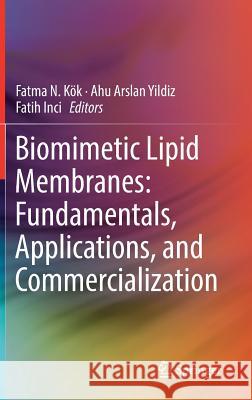Biomimetic Lipid Membranes: Fundamentals, Applications, and Commercialization » książka
topmenu
Biomimetic Lipid Membranes: Fundamentals, Applications, and Commercialization
ISBN-13: 9783030115951 / Angielski / Twarda / 2019 / 306 str.
Kategorie:
Kategorie BISAC:
Wydawca:
Springer
Język:
Angielski
ISBN-13:
9783030115951
Rok wydania:
2019
Wydanie:
2019
Ilość stron:
306
Waga:
0.64 kg
Wymiary:
23.39 x 15.6 x 2.06
Oprawa:
Twarda
Wolumenów:
01
Dodatkowe informacje:
Wydanie ilustrowane











